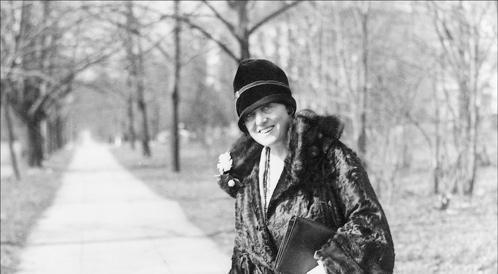Sir Arthur Conan Doyle (1859–1930) was never a fan of his most popular creation, the so-called great detective Sherlock Holmes. As much as readers loved the adventures of the supersleuth and his biographer, Dr. Watson, Doyle preferred writing historical romances like “The White Company” (1891) and “Rodney Stone” (1896) rather than detective stories.
Doyle’s disdain for Holmes ran so deep that he killed off the character in December 1893 with the publication of “The Final Problem.” The story features the apocalyptic duel between Holmes and the “Napoleon of crime,” Professor James Moriarty. Moriarty, the criminal supervillain of the Holmes canon, manages to wrestle Holmes to the bottom of Switzerland’s Reichenbach Falls, thereby ending the career of literature’s greatest detective.

Fans call the period between the publication of “The Final Problem” and “The Adventure of the Empty House” the Great Hiatus. The sadness over the loss of Sherlock Holmes was supposedly so great that Londoners took to wearing black armbands as a sign of public mourning. Doyle eventually gave in to public pressure by not only publishing the standalone novel “The Hound of the Baskervilles” (1902), which is widely considered the supreme Holmes novel, but ultimately restarting the Holmes stories with 1903’s “The Adventure of the Empty House.”
The Holmes that returned was different, however. My book, “Hands Dabbled in Blood” (Thought Catalog, 2014), goes more in depth about the reasons for these changes, but suffice it to say that the world had changed significantly between 1893 and 1903. Prior to his plunge in Switzerland, the 19th-century Holmes typically worked cases featuring sunbaked Anglo colonists recently returned from India or South Africa, wayward Englishmen, or the criminal class of Londoners drawn to the imperial metropole.
In the first Holmes novel, “A Study in Scarlet” (1887), Dr. Watson characterized Holmes’s London as “that great cesspool into which all the loungers and idlers of the Empire are irresistibly drained.” By 1903, Doyle began casting a wider and more international net for his villains.

A Different Kind of Criminal
During what I call the Post-Reichenbach Falls era (1903–1928), the Holmes stories explicitly dealt with political issues such as the naval rivalry between Britain and Germany, the influx of foreigners into the United Kingdom, and the rise of anarchist violence on the Continent and in the United States. Immigrant anarchists and German spies become the most common villains in the latter Holmes stories.In “The Adventure of the Six Napoleons” (1904), Holmes and Dr. Watson do battle with an Italian anarchist who is described in the most unflattering ways. Called “an alert, sharp-featured simian man with thick eyebrows and … the lower part of the face like the muzzle of a baboon,” the Italian anarchist is guilty of the unusual crime of stealing and smashing busts of Emperor Napoleon. The descriptions of the anarchist reek of the criminological pseudoscience of Cesare Lombroso (1835–1909), who believed that criminality was biological and related to atavism.

Doyle, a follower of scientific trends, likely agreed with some of Lombroso’s theories. Doyle was also a student of history, as an Italian anarchist would undoubtedly share the Jacobin disdain for Napoleon, whom the far-left has long blamed for tempering the ideals of the French Revolution.
Another story, “The Adventure of the Red Circle” (1911), features a shadowy group of Italian criminals known as the Red Circle. The Red Circle is described as part revolutionary sect and part extortion racket like the Black Hand group that was then terrorizing Italian immigrant communities in the United States.
The American flavor of “The Adventure of the Red Circle” is so strong that it features a private detective named Leverton, a member of the same Pinkerton agency that protected President Abraham Lincoln during the U.S. Civil War and engaged in the labor wars of the 19th century on the side of businesses and managers.

Political radicals even make an appearance in the final Holmes novel, “The Valley of Fear” (1915). Set mostly in the coal mines of Pennsylvania, “The Valley of Fear” is a thinly veiled retelling of Pinkerton detective James McParland’s real takedown of the deadly Irish labor union, the Molly Maguires.
The Post-Reichenbach stories serve as a timely reminder of the prevalence of political violence and how much radical ideologies are intertwined with common criminality. The Molly Maguires and the many Italian and French anarchists who committed bomb attacks throughout Europe in the late 19th and early 20th centuries believed that their use of violence was just, much in the same way as others today see the wanton destruction of property as just. The truth is and has always been that these groups committed horrific crimes and engaged in antisocial behavior that negatively impacted the lives of everyday people.
Like the bust-smashing con in “The Adventure of the Six Napoleons,” political radicals have always delighted in destruction, never in creation. Thankfully, at least in fiction, they tend to be met with righteous force in the form of the law and its protectors. Sherlock Holmes and Dr. Watson are such guardians of law and order.
The late Sherlock Holmes stories may be inferior to their predecessors in many ways, but they do show a less bohemian, more patriotic Holmes. In what is his swan song, “His Last Bow” (1917), Holmes defeats an insidious German spy out to weaken the British Empire during the beginning of the Great War. This is a perfect capstone for the detective who spent the better part of the 19th century saving the honor of several British women, and the 20th century defeating the forces of anarchism and revolutionary violence.
Sherlock Holmes was and is much more than a detective—he is the spirit of justice administered with a powerful mind and a firm belief in the rightness of social order and peace.





